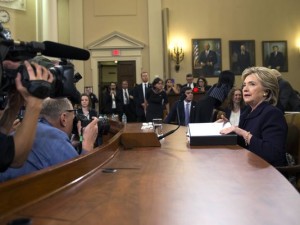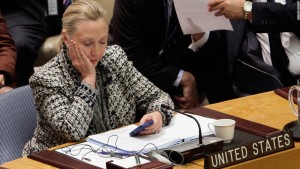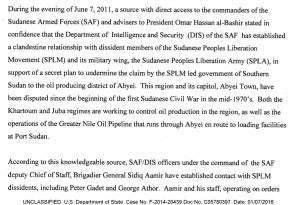[1] How well does the title provocatively focus the reader’s attention, as well as the lede? Is it thoughtful, creative, clever? Does it lead the reader into the text and provide some insight into the issue?
– I think that the title is provocative and that I was able to get it to get the readers attention. It’s called “All for the Sake of Convenience,” so I would assume that someone did something for their convenience and clearly it was not worth the price. I also think the lede is good because it basically provides some sort of insight into the controversy but then it makes the reader want to know more to be able to under stand the issue and to see who is at fault.
[2] How well does the introductory section of the article invite the reader into the paper, as well as offer up exigency? How does it locate a problem or controversy within a context that provides background and rationale?
– I think the introductory section is pretty good. It provides some background information into the controversy and how it was started. It definitely has exigency because the person that the controversy is surrounding is currently a Presidential candidate and is currently the Democratic favorite to win the parties nomination.
[3] How well does the writer offer up a strong ‘idea’ that requires analysis to support and evolve it, as well as offers some point about the significance of evidence that would not have been immediately obvious to readers.?
– I think that I do a good job of offering evidence and then providing analysis of why that evidence is important. For example, one of my pieces of evidence was an email from a man to Hillary about things going on in Sudan. I believe I offered good analysis because I talked about the sort of information it was, where its supposed to be (NSA, CIA, etc.) and I also said that the man has not worked for the government for over 15 years. So yes, I think I did pretty good in offering a strong idea that requires me to analyze and evolve it and help explain evidence and its importance to the reader.
[4] How well does the writer show clarity of thought; uniqueness of presentation; evidence of style; and historicized topics?
– I think I did pretty well showing clarity of thought, uniqueness of presentation, evidence of style and historicized style. I felt that I was able to get my points across clearly and I feel like my writing definitely has style with a specific tone that I use for most of my blog entries. (pretty similar to Unit I)
[5] How well does the writer recognize that a NYTs Magazine audience will challenge ideas that are overgeneralized or underdeveloped or poorly explained? (that is, did the writer avoid cliché and vagueness or address points/issues readers are likely to have?) How well did the writer decide about how to develop, sequence, and organize material?
– I think that I also did well in recognizing the challenges of a NYTs magazine audience. For example, I provided an example of another government official using their personal email account, but the way they used it was much much different than the way Hillary used her account and I felt I was able to knock off the counterargument that she is just being used as an example. In addition, some counterarguments, I felt, we re handled with just with the amount of information that I offer and evidence that shows that something did in fact happen that should not have happened.
[6] How well does the writer research a controversy, develop a persuasive stance, utilize research about the topic, and join the ‘debate’ by making an argument of importance?
– I think I did a good job researching a controversy, developing a persuasive stance, utilize research about the topic and joining the debate by making an argument of importance. I feel like I was able to include as much information into this as I could. However, it was very difficult choosing what to talk about because there have been some new developments throughout the writing process. I feel like I did develop a persuasive stance because I used examples of authority figures missed things, or having lapse’s in judgment that could’ve prevented an attack. My main stance is that this can’t happen because it has the possibility to lead to attacks on the country. You pretty much cannot disagree with that.
[7] How well does the writer meet or exceed research expectations of assignment requirements (6 appropriate secondary sources, 1 visual source, (or more) and primary research? ).
– I had 6 secondary resources, 2 primary sources which were two pictures of actual emails sent to Hillary and I also had a primary source that helped me understand the whole FOIA act aspect of the controvery. So I think I did very well meeting the research expectations.
[8] How well does the writer integrate secondary and primary sources (that support and complicate the topic) effectively into the text, introducing and contextualizing them, and “conversing” (i.e. no drop-quoting) in ways that deepen and complicate the analysis?
– I think I integrated them pretty well because both my primary research and secondary research are used to enforce my stance. In addition, I think I did well in that as well because my primary research helped me understand my secondary sources and the controversy much better.
[9 How well does the writer persuade an audience to consider claims made from a particular position of authority on which you have built your research? How strong and effective is the writer’s use of rhetorical tools (ethos, logos, pathos)?
– I think that I do a good job in persuading an audience to consider claims made from a particular position of authority. I think I provide enough details and information for the audience understand why the issue at hand is wrong and that it should be fixed. I think that I demonstrate ethos, logos and pathos really well as well. Ethos by showing that I have a good understanding of the topic, pathos by showing how something like this has the possibility to lead to attacks, and logos because I try and show that this could have easily been prevented if Hillary just followed the rules.
[10] How well does the writer select appropriate, interesting, revealing visual? Has the writer placed a visual strategically in the essay and provided relevant commentary on and/or analysis of them? Do the visuals contribute to the essay in meaningful ways (i.e. would the essay be affected if the writer took the visual away)?
– I did well in selecting the appropriate visuals. I used pictures of Hillary (obviously because this is about her), another government official who was requested to release his emails, two emails that were sent to Hillary and I provided good explanation of the background of the emails and the type of effect they had on the issue. I also included pictures of two headlines from newspapers that show how authorities missed information that could have prevented attacks. I think all visuals contribute substantially to the essay, especially the emails and headlines.
[11] How well does the writer show development of final article using various drafts, in-class peer editing and workshops, and/or teacher comments?
When I was working on my final draft most of the notes I was looking at were response from classmates and teachers on both my Ted talk and my claim. It was very helpful because it helped my understand what the audience wanted to hear and needed to hear.
[12] How well does the writer use hyperlinks—are they effective/appropriate?
I used hyperlinks well. All sources are hyperlinked for the first time that they appear in the text.
[13] How well did the writer edit for grammar, style, and usage effectively? Does the writer’s attention to sentence level issues help him/her establish authority or credibility on the issue?
– I think I did well in editing the overall draft. I wanted to really make sure it did not feel like an essay so I tried to break it up evenly, add pictures and make it flow really nicely. I think a writers attention to sentence level issues does not have any affect on credibility. The only thing that should affect and establish authority is the level of research that is done and a good understanding of the argument. But if you want me to further answer that question, then yes I think I establish credibility and authority on the issue.








